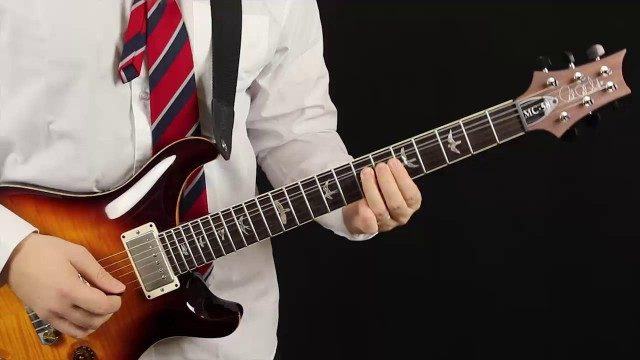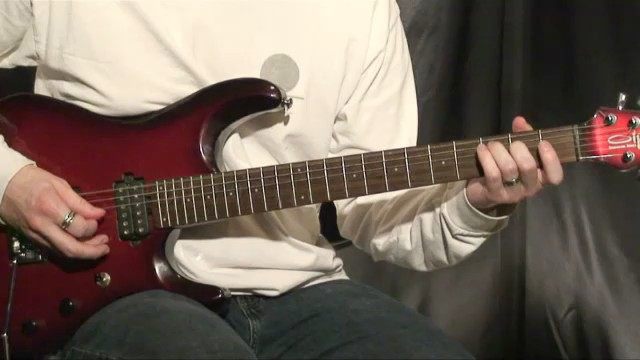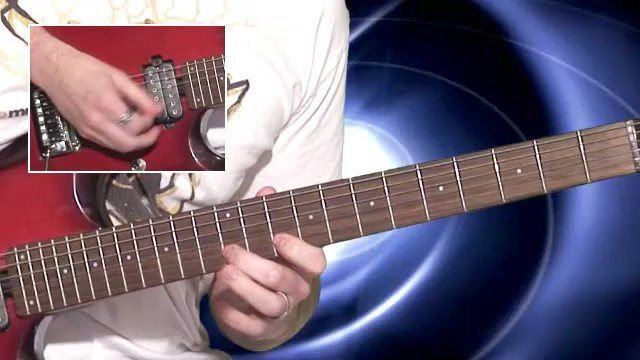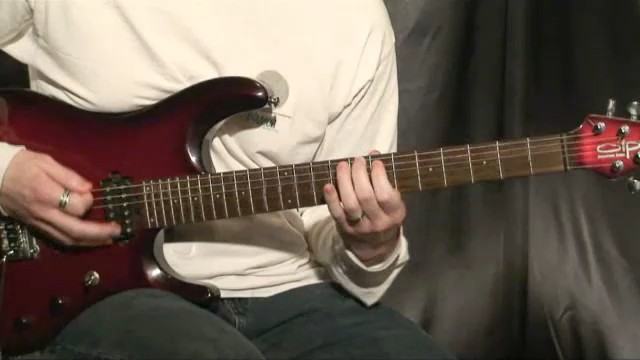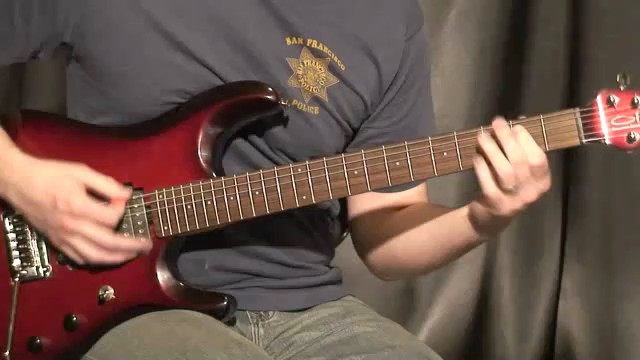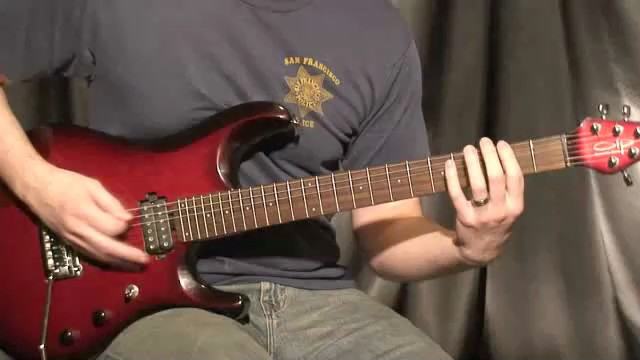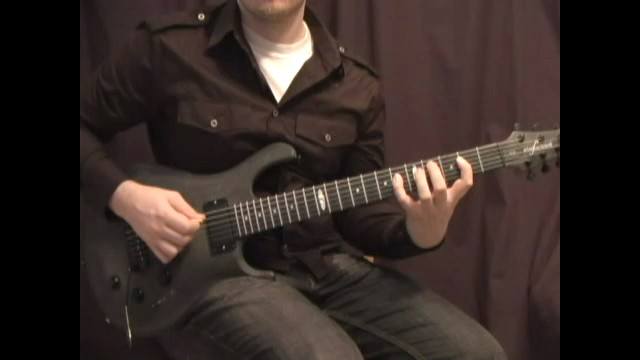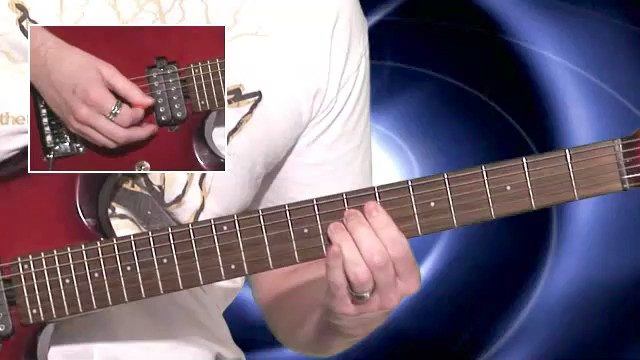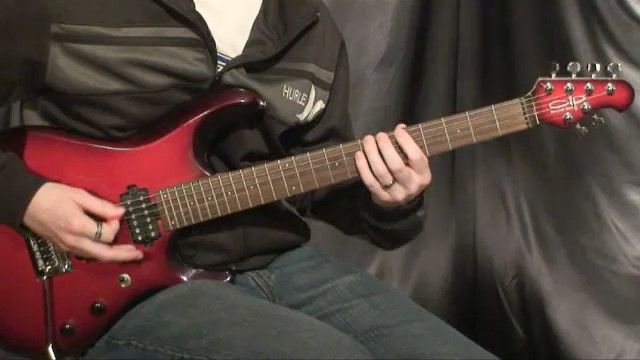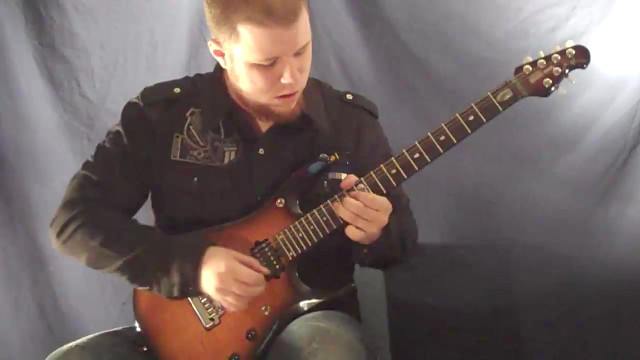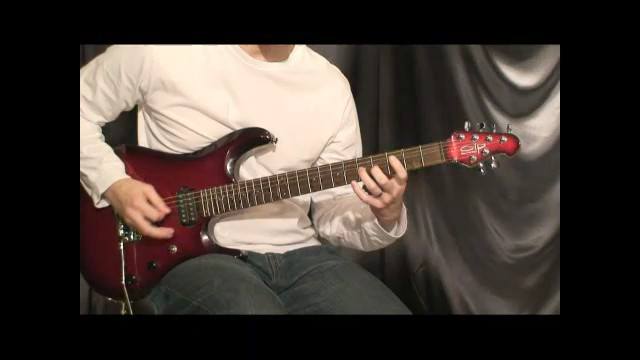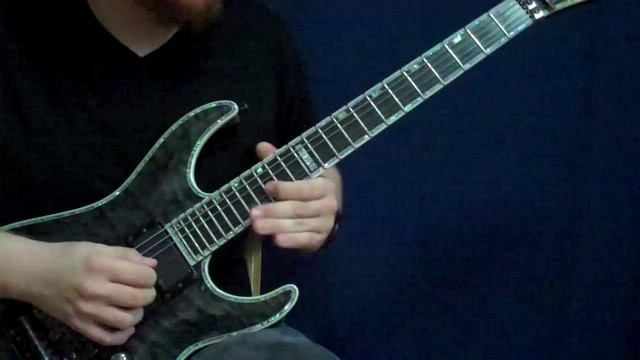In bar 23, you will come across one of the “hurdles” in this song. You might ask yourself “hey, I know tapping. Why should this be a problem?” Well, dear Sir or Madam, let me tell you...
When looking closer at the tapping run in bar 23, we see that the general idea and concept is derived from a triplet pattern in the F# minor pentatonic scale. But, here comes the catch. I alter the note value within the line, beginning with the anticipated 16-note triplets but then altering the note value to 9-tuplets.
9-tuplets you say? What’s that? That is 9 notes played over the length of one beat, hence the name. This note value might at first seem intimidating and might just sound like I’m floating over the beat, but there is a key to playing it with flow and confidence (as with everything else). When first encountering 9-tuplets, you might want to practice it with an easier pattern (check out my tapping lessons), but once you got that down you will be flying across the neck, liberated from patterns or licks. In this case, however, the easiest thing is to let your right hand take the lead.
You will see that every three notes there is a tap. The easiest way to analyze 9-tuplets is to think that you have an 8-note triplet, and sub divide each of those three notes into three; 3x3=9. Since your right hand will play the first note in each of these three groupings, your right hand will in effect be tapping an 8-note triplet. Just try the first 9-tuplet (beginning on the second beat of bar 23), focus on your right hands taps, and set your metronome to playing 8 note triplets at 95 bpm. Once you got that down, the rest of the tapping run should present no obstacle other than a purely technical one.

















